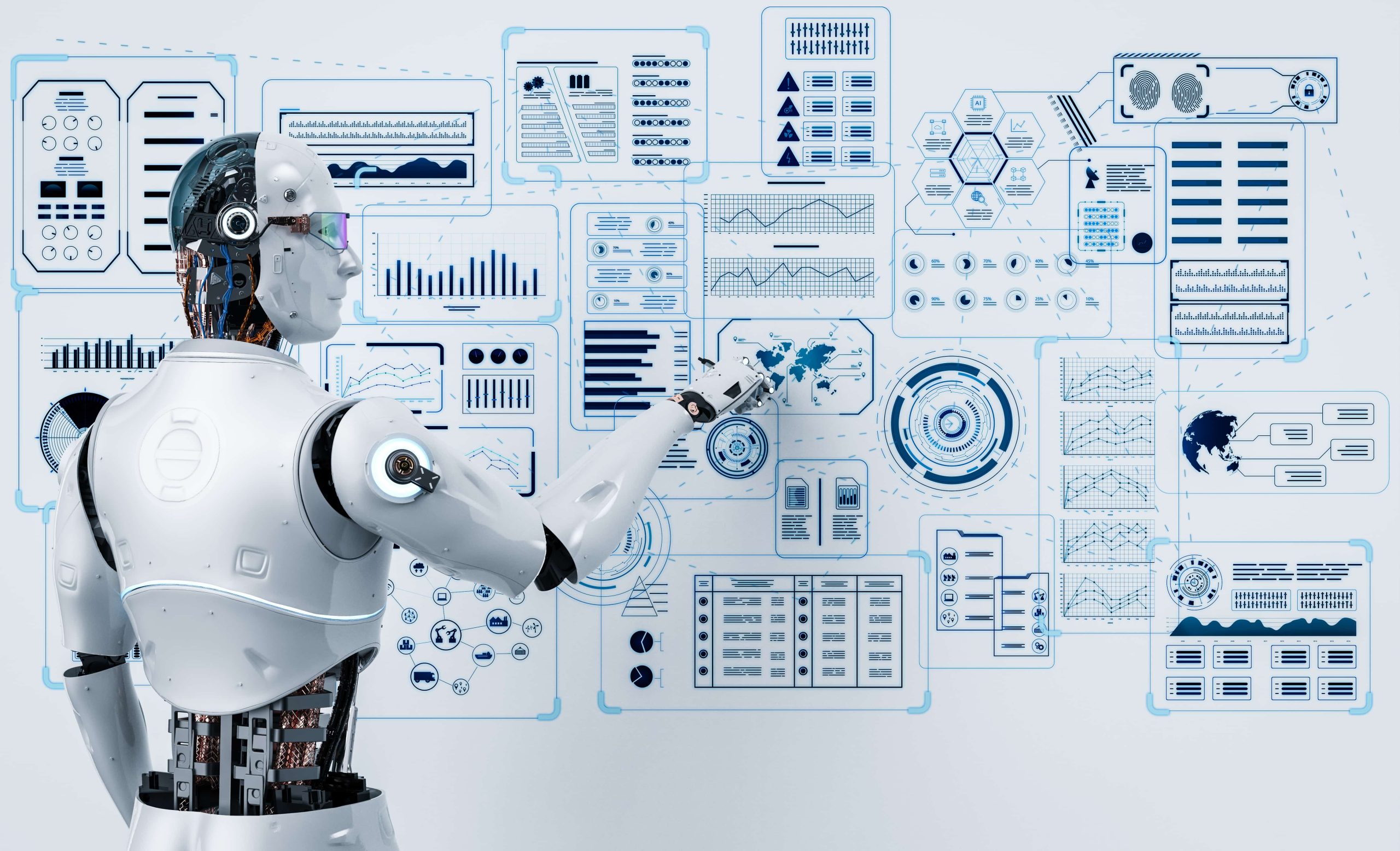Machine Learning (ML) is a subset of Artificial Intelligence (AI) that focuses on creating systems capable of learning from data and making predictions or decisions without explicit programming. In this guide, we will explore the fundamental concepts and algorithms of machine learning.

1. What is Machine Learning?
a. Definition: Machine Learning is the scientific study of algorithms and statistical models that enable computers to learn and make predictions or decisions without being explicitly programmed.
b. Learning from Data: ML algorithms learn patterns and relationships from data, allowing them to generalize and make predictions or decisions on unseen data.
2. Supervised Learning:
a. Definition: Supervised learning involves training an ML model using labeled data, where each example is associated with a known target variable.
b. Regression: Regression models predict continuous numerical values, such as predicting housing prices based on features like location, size, and number of rooms.
c. Classification: Classification models assign categorical labels to data, such as predicting whether an email is spam or not, based on various features.
3. Unsupervised Learning:
a. Definition: Unsupervised learning deals with unlabeled data, where the model identifies patterns, structures, or relationships without explicit target variables.
b. Clustering: Clustering algorithms group similar data points together based on their characteristics, enabling data exploration and pattern discovery.
c. Dimensionality Reduction: Dimensionality reduction techniques reduce the number of input variables while preserving important information, facilitating data visualization and analysis.
4. Reinforcement Learning:
a. Definition: Reinforcement learning involves training agents to interact with an environment and learn optimal actions through trial and error.
b. Rewards and Punishments: Reinforcement learning agents receive rewards or punishments based on their actions, enabling them to learn from the consequences of their decisions.
c. Exploration and Exploitation: Agents strike a balance between exploring new actions and exploiting previously learned knowledge to maximize long-term rewards.
5. Key Machine Learning Algorithms:
a. Decision Trees: Decision trees partition data based on a series of binary decisions, forming a tree-like structure for classification or regression.
b. Random Forests: Random forests combine multiple decision trees to improve prediction accuracy and handle more complex datasets.
c. Support Vector Machines (SVM): SVMs separate data into different classes by finding an optimal hyperplane that maximizes the margin between classes.
d. Neural Networks: Neural networks are composed of interconnected layers of artificial neurons that mimic the structure and function of the human brain, enabling complex pattern recognition and decision-making.
e. K-Nearest Neighbors (KNN): KNN classifies data based on its proximity to labeled instances in the training set, assigning labels based on the majority of the k nearest neighbors.
f. Naive Bayes: Naive Bayes classifiers use Bayes’ theorem to predict the probability of a particular class given the data and assume feature independence.
6. Machine Learning Workflow:
a. Data Collection and Preparation: Gather and preprocess data, ensuring data quality, handling missing values, and encoding categorical variables.
b. Feature Selection and Engineering: Identify relevant features and transform them to extract meaningful information for model training.
c. Model Selection and Training: Select appropriate algorithms and train models using labeled data, optimizing them through techniques like cross-validation.
d. Model Evaluation and Validation: Assess model performance on unseen data, using metrics such as accuracy, precision, recall, or mean squared error.
e. Hyperparameter Tuning: Fine-tune model parameters to optimize performance through techniques like grid search or Bayesian optimization.
f. Deployment and Monitoring: Deploy trained models in real-world applications and continuously monitor their performance, updating models as needed.
7. Learning Resources:
a. Online Courses and Tutorials: Platforms like Coursera, edX, and Udemy offer comprehensive ML courses by renowned institutions and experts.
b. Books: Read books like “Hands-On Machine Learning with Scikit-Learn and TensorFlow” by Aurélien Géron or “Pattern Recognition and Machine Learning” by Christopher Bishop.
c. Open-source Libraries: Utilize popular ML libraries like Scikit-Learn, TensorFlow, or PyTorch, which provide comprehensive documentation and examples.
d. Kaggle Competitions: Participate in Kaggle competitions to gain hands-on experience, learn from others, and benchmark your models against top performers.
e. Research Papers and Conferences: Stay updated with the latest research and attend ML conferences like NeurIPS, ICML, or CVPR to learn about cutting-edge techniques and network with ML professionals.
Conclusion:
Machine Learning empowers computers to learn from data and make predictions or decisions without explicit programming. By understanding the fundamental concepts, algorithms, and workflow of machine learning, you can embark on a journey to solve complex problems, make data-driven decisions, and develop intelligent systems. Continuously learn, experiment, and stay informed about the latest advancements in the field to harness the full potential of machine learning. Remember, machine learning is a dynamic and evolving discipline, and practice is key to mastering this exciting field.